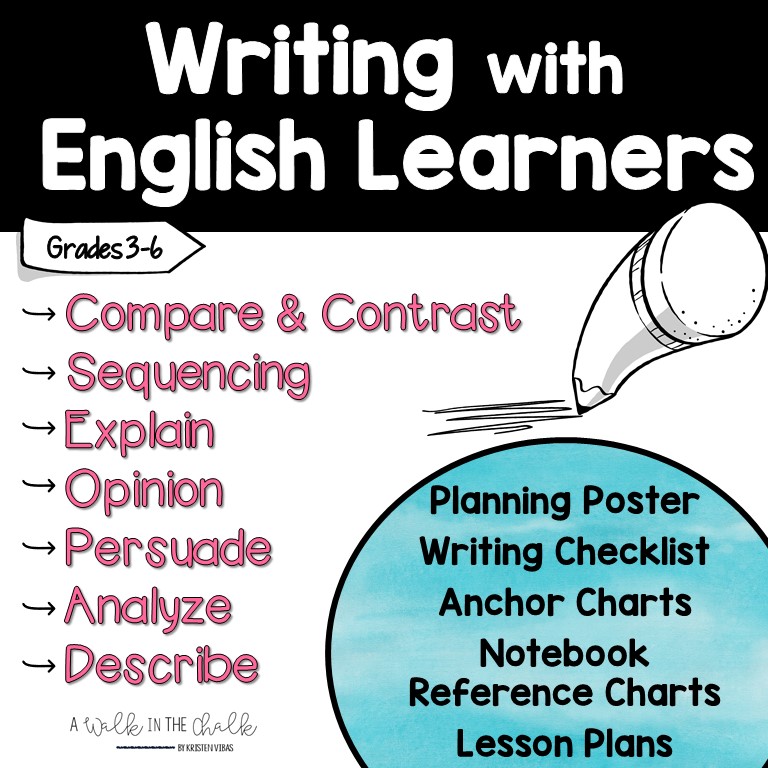
Push-in ESL support and co-teaching can be powerful for both students and teachers alike. I've found that when general education teachers are open to "sharing" their class and planning together, the results can be truly awesome for all involved. ESL students benefit greatly from this kind of collaborative environment, as do non ESL students. However, it's not always easy to navigate. I've worked with teachers who've had a hard time with this experience. They saw my role more as an "instructional assistant,' which I was not, and in turn the impact of two teachers in the room had minimal benefit. Here are a few tips for establishing a positive co-teaching experience.
Co-Planning
Find time in your schedule to consistently meet with the teachers you'll be supporting or co-teaching with. I've done this two different ways.
1- Each day of the week I devote 15-30 minutes, usually before or after school or during common planning time, to meet with the individual teachers I'm working with. For example, every Monday from 8:15-8:30(ish) I meet with Miss Linke, every Tuesday I meet with Miss Robbins, every Wednesday I meet with Mrs. Katchmark, and so on. During our weekly meetings we discuss specific students, upcoming lessons (and who will lead them), materials needed, and coordinate our small group schedules so they don't conflict.
2- Once a week meet with the grade level team during their common planning time. That way, if I'm supporting multiple teachers on the same grade level, I'll know what everyone has planned and where I can best support classrooms. I can also share materials with the whole team (that's a great way to support classrooms!) and discuss ways to modify lessons and scaffold instruction and assessments for our English learners.
Classroom Work Space
I'd also highly recommend that you have a designated area within the classrooms to work with your small groups. If there is not a table and some chairs for you and your students to work, find a way to get that put in place. I believe this is very important as it sends a message to others about the ESL teacher's role in the classroom.
I also keep several magazine boxes, one for each small group, in the rooms that I push into. These are for storing my students' ELD folders & notebooks.
Communication is Key
Communication between colleagues is key. Start the year off by reaching out to the teachers whose classrooms you'll be working in. Start to build a relationship with them. Also, let them know who their EL students are and what language needs are in the classroom. Then, keep that open communication going throughout the year. 😉
Push-in ESL support can be a highly effective instructional model, when done well. But it can be challenging when roles and expectations are blurred. Mutual respect, clear expectations, sharing of expertise, common goals and flexibility are all factors that make for a successful co-teaching or push-in model. And when it works, it truly is a win-win situation for both students and teachers. 🙌
























No comments